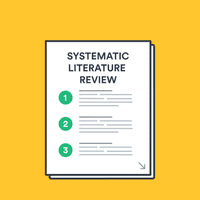Is a newspaper article a primary source?

Yes, a newspaper article is generally a primary source. However, this is only true for newspaper articles that are used for historical research. This is because newspaper articles, written about a specific event immediately after its occurrence, can be viewed as primary sources. However, it is important to ask a number of questions about the article itself before you decide to include it in your research as a primary source. Read on below to learn what these questions are, and why it is important to ask them.
➡️ What is a secondary source?
Newspaper articles as primary sources
Newspaper articles are great starting points for research, and can sometimes be invaluable vaults of information, but when you want to use a newspaper article in your paper, you need to know why. Many people assume that newspaper articles are always primary sources, but it's important to ask yourself some questions about the article before you include it in your research.
- Who wrote the article? An expert, a journalist, an eyewitness to an event?
- Why was the article written? In response to a current event, to spread news, to share an opinion?
- When was the article published? Was the article published before or after the event it discusses?
When is a newspaper article a primary source?
This very much depends on the answers to the questions above. These answers are the basis of your decision on whether or not the content is original, an analysis, or an opinion. If you come to the conclusion that the content is original, then, yes, the article qualifies as a primary source. If the article is a feature about a new innovation in technology or a current trend, then it is a secondary source. The same goes for interviews since they will likely have been edited.
➡️ What is the difference between primary and secondary sources?
➡️ Is an interview a primary source?
Articles written and included in daily newspapers, before the internet, were the latest and most up-to-date reports of events. Often, there was a morning and an evening edition of a daily, and as such, these are often regarded as primary sources.
How to cite a newspaper article
The citation style used will determine the exact citation format. This is how you would cite a newspaper article from the New York Times print version in APA:
Belluck, P. (2018, July 26). Promising Alzheimer’s drug attacks brain changes and symptoms. New York Times, A1.
Instead of worrying about the correct format of your citation in any given citation style, you can use a reference manager like Paperpile to generate your citation automatically and correctly for you.
Collect your sources and keep them tidily organized in your Paperpile library. Switch between thousands of citation styles and cite your references directly in Google Docs, Microsoft Word, and LaTeX:

Frequently Asked Questions about newspaper articles as primary source
📰 Is a newspaper article about 9/11 a secondary source?
If the article's content is original and/or a first-hand account of 9/11, then it is a primary source. If the article describes 9/11 as a past event, then it's a secondary source.
🆕 Is a New York Times article a primary source?
Yes, in most cases. A New York Times article is a primary source only when the content is original or a first-hand account of an event. If the article describes past events or an interview, then it's a secondary source.
🗞️ Is a Wall Street Journal article a primary source?
Yes, in most cases. A Wall Street Journal article is a primary source only when the content is original or a first-hand account of an event. If the article describes past events or an interview, then it's a secondary source.
👓 Is a Washington Post article a primary source?
Yes, in most cases. A Washington Post article is a primary source only when the content is original or a first-hand account of an event. If the article describes past events or an interview, then it's a secondary source.
🔎 Is a newspaper article a secondary source?
Some newspaper articles are secondary sources. If the article describes past events or an interview, then it's a secondary source.


